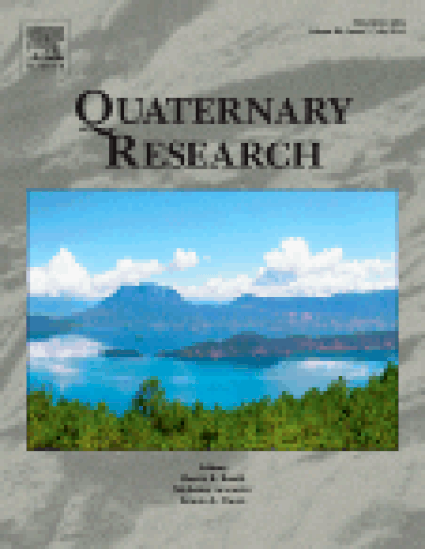
Article
Timing and Extent of Late Quaternary Paleolakes in the Trans-Pecos Closed Basin, West Texas and South-Central New Mexico
Quaternary Research
(1997)
Abstract
The Trans-Pecos Closed Basin is a hydrographically closed region covering 20,000 km centered on Salt Basin, 160 km east of El Paso, Texas. Geomorphic and limnetic evidence have been used to identify four major highstands for Lake King during the last glacial maximum (LGM). Additional geomorphic features from a second, recently identified, paleolake, Lake Sacramento, have been found in the Beargrass subbasin, a nested subbasin approximately 75 km northwest of Salt Basin. Radiocarbon ages of the organic material in Lake King sediments date four abrupt climate changes and rapid lacustrine transgressions during the LGM with a quasi-periodicity of 2000 yr. Geomorphic evidence in the Beargrass subbasin identifies lake cycles contemporaneous with those in Lake King. The dates for these transgressions correlate with the dates of freshening events identified by researchers in paleolake basins elsewhere in New Mexico. The quasi-periodicity of the events approximates that of Dansgaard–Oeschger events identified from Greenland ice cores. The contemporaneity of the Trans-Pecos transgressions with transgressive events in other basins in the region suggests that paleolakes in the region were in phase with respect to abrupt climate changes during the latter stages of the LGM.
Disciplines
Publication Date
May 1, 1997
Citation Information
David E. Wilkins and Donald R. Currey. "Timing and Extent of Late Quaternary Paleolakes in the Trans-Pecos Closed Basin, West Texas and South-Central New Mexico" Quaternary Research Vol. 47 Iss. 3 (1997) Available at: http://works.bepress.com/david_wilkins/7/
